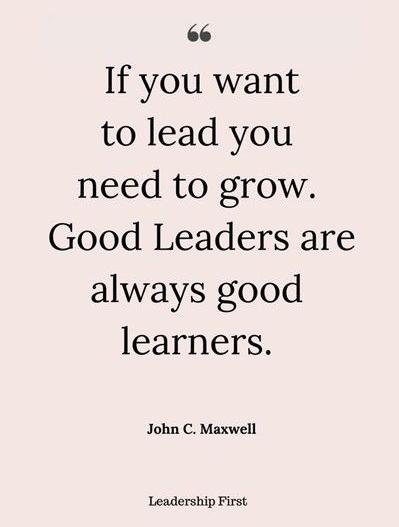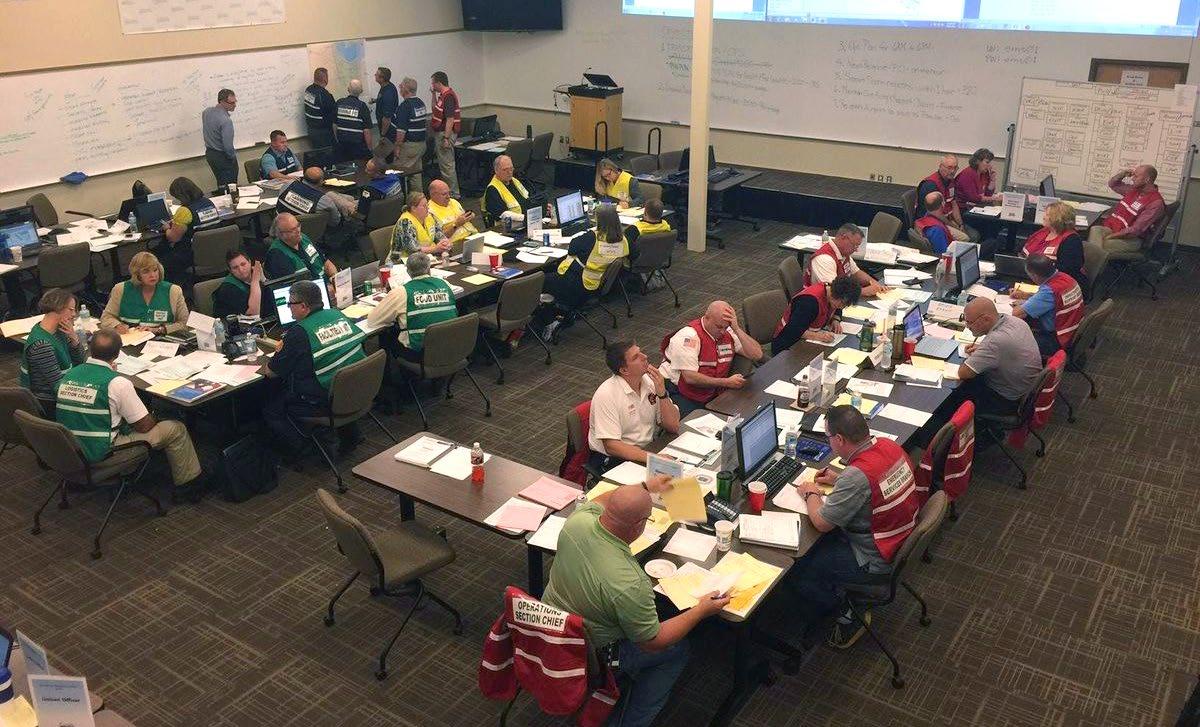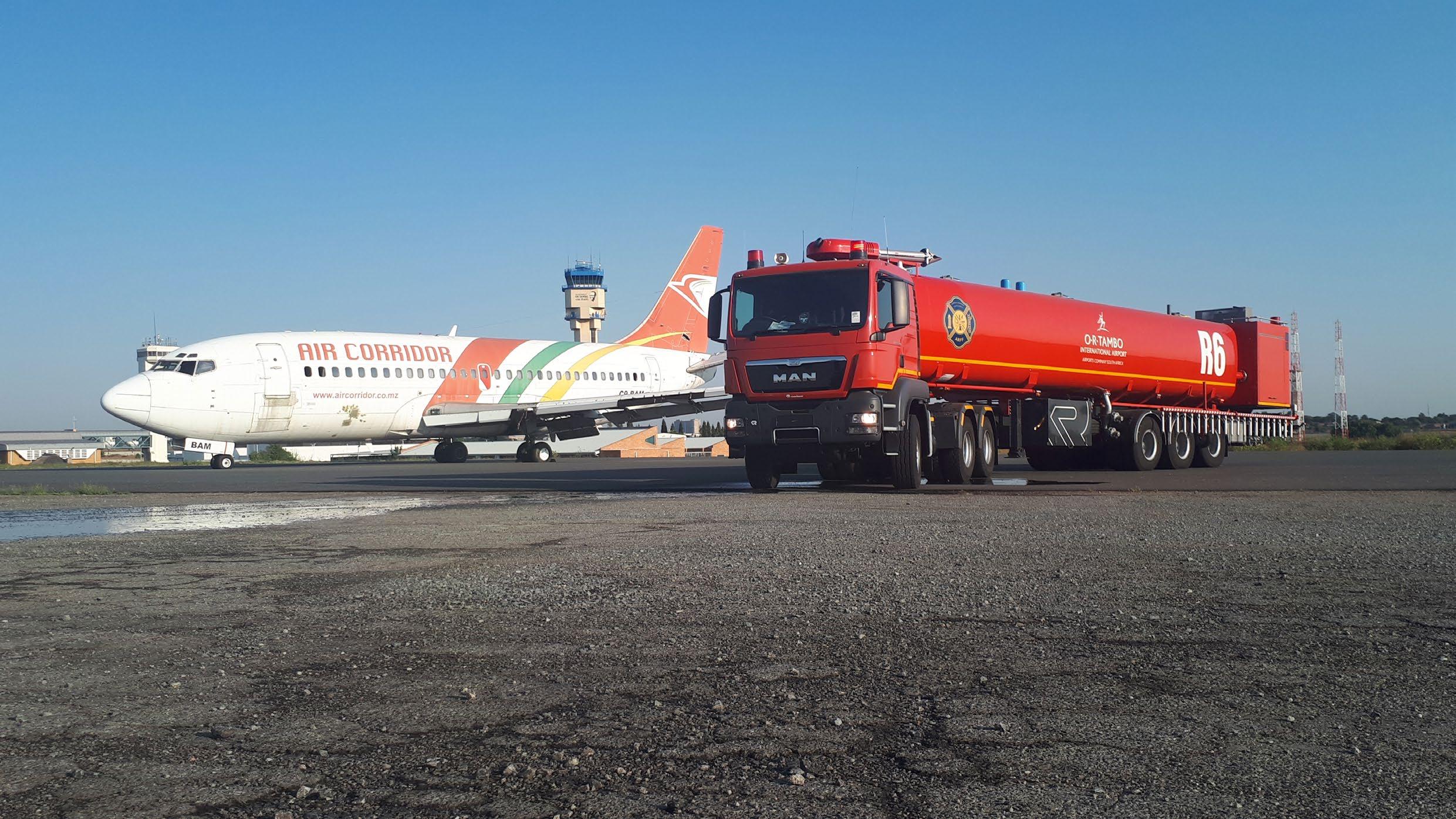
9 minute read
Self-defence strategies for first responders Why self-defence for emergency workers? - by Morné Mommsen
Why self-defence for emergency workers?
By Morné Mommsen, Midvaal Fire and Rescue and Warrior Combative
Advertisement
South Africa and other countries promote visual aids trying to stop violence against emergency services but the reality is actually that no one is doing anything about this problem and it really does not make sense, a person with this type of outlook (existentialists believe) in life only objective are to hurt, steal and kill or whatever and it will never change. People will rather take a video of a medic being assaulted or killed because of his/her social craving before attempting to help the emergency worker.
Existentialism in the broader sense is a 20th Century philosophy that is centred upon the analysis of existence and of the way humans find themselves existing in the world. The notion is that humans exist first and then each individual spends a lifetime changing their essence or nature.
In simpler terms, existentialism is a philosophy concerned with finding self and the meaning of life through free will, choice and personal responsibility. The belief is that people are searching to find out whom and what they are throughout life as they make choices based on their experiences, beliefs and outlook. And personal choices become unique without the necessity of an objective form of truth. An existentialist believes that a person should be forced to choose and be responsible without the help of laws, ethnic rules or traditions.
Most importantly, it is the arbitrary act that existentialism finds most objectionable-that is, when someone or society tries to impose or demand that their beliefs, values or rules be faithfully accepted and obeyed. Existentialists believe this destroys individualism and makes a person become whatever the people in power desire thus they are dehumanised and reduced to being an object. Existentialism then stresses that a person’s judgment is the determining factor for what is to be believed rather than by arbitrary religious or secular world values.
Some organisation states that emergency service member needs to carry firearms. As a firearm expert and instructor, the following question comes to mind, “How will you be able to protect your firearm if you busy with a patient or standing with a spreader in your hand?” Sorry, you can’t protect your firearm and how many of you that do have a firearm, can really use it in a combat situation, meaning physically be able to use it? Many will become an expert with regards to YouTube videos or as experts we call them ‘YouTube Warriors’. As an instructor who has been in the martial arts long enough to understand this and who has more than 28 years service in the fire department, I feel I should share this.
Emergency members need to get regular training in some kind of selfdefence system. I represent Warrior Combative and Mile High Kickboxing - Shidokan who specialised in Krav Maga System, Kickboxing and the US National Fire Protection Association (NFPA) Self-Defence Course designed for the purpose of defending yourself against the reality on the street. It takes hard work and dedication to be able to defend yourself and I can promise you, nothing comes easy. But in today’s world of mixed martial arts, civilian selfdefence courses, military combatives and an overall ‘new’ approach to self-defence by people who “think outside the box,” I can tell you, there is much confusion by people new to the martial arts world as to what exactly is the best approach for them. Many seek different things in martial arts, however, one thing they seem to have in common, is self-defence.
You need to concentrate on awareness programmes, communication skills, basic stances, target areas, how to plan escape routes, how to control the fight and flight effects and if all fails, one-on-one fighting skills, multiple attacker fighting skills, knife fighting skills , firearm skills and so much more and remember nothing in life is for free or come easy.
On so many occasions training programmes and skills development with regards to self-defence for emergency members was sent and introduced to various departments, entities and everyone always state “Wow” or “What a good idea” or “We must make this a priority”. For how long do you want to make it a priority and don’t act or must we wait till the first one is killed or raped or missing. If interested in any form of assistance please contact us via email:
Gauteng: dnaemergency@gmail.com Meyerton: davidkies.dk74@gmail.com Cape Town: pvogts1@gmail.com
Why leaders should keep learning
By Tom Wood, RWA Insight (Edited)

Successful leaders never stop learning. Whether they read books, learn new skills, study academic or business journals, learn from their employees or peers, or strive for change through innovation, they all share a passion for wanting to learn new skills and ideas.
Life itself is one long learning experience and to get to the positions that they have reached, leaders need to have learned skills and knowledge along the way.
The modern business world is evolving and changing at a very fast pace. Change is driven through innovation, good business strategy and creativity. Companies that stand still and don’t embrace change run the risk of being overtaken either by a competitor or someone who is more willing to learn to do things better.
Learning does not just have to be about skills. A good leader will network with peers, management and other leaders, listen to issues arising and consider what is happening in other industries and with technology advancements that they can use. They will listen to their teams, monitor social media channels and learn through communication.
Five tips to help • Be curious and inquisitive about your work environment and your industry • Identify fire departments that are doing well and try and understand what sets them apart • Have a playful mind and think creatively about learning new skills and changing how you manage your teams • Involve your colleagues. Quite
often they will have hands-on experience that you can learn from to improve your leadership skills • Focus on self-development.
If your crews, colleagues and peers see that you take personal development seriously, then they are likely to as well.
Consider this: If you, as the leader, take personal development seriously then in theory you should find ways to improve your leadership skills and find ways to make your teams grow.
Now apply this personal development to all of your staff and colleagues. If they see you doing it and championing personal development, then they are more likely to take personal development seriously for themselves. They will become more motivated, more educated and they, too, will find ways to improve your department and find ways to make it grow.
The more motivated and developed individuals and teams that you have in your department, the greater success rate you will have in terms of growth, innovation and change management.

Fire hooks: One of fire fighting’s oldest tools

This image was scanned from Adrian Tinniswood, By Permission of Heaven: The Story of the Great Fire of London (London: Jonathan Cape, 2003) The use of fire hooks can be traced back to Rome in 6AD


Afire hook is a tool that is designed to be used by fire fighters who need to be able to gain access to a space or clear debris. Fire hooks are used in urban as well as rural areas and are commonly stocked in the equipment carried on fire apparatus. There are a number of different designs available, with various heads for the hook that have been engineered for specific operations. In the Merriam-Webster dictionary, fire hooks are defined by “a stout pole having a hooked metal head and used especially in fire fighting for tearing down walls or ceilings”.
The fire hook is a very versatile tool and can be used as a probe or prying tool to get around doors, windows and other openings. It can also be used to quickly tear through walls and other obstacles and for tasks such as cutting into ceilings and floors, tearing into ventilation systems etc. The head of a fire hook may include blades or serrations for the purpose of cutting quickly and efficiently, and to reduce the risk that the hook will become trapped.
In addition to being used during a fire to gain access, a fire hook can also be useful for probing as a fire settles. The hook can be used to move and push debris to confirm that there are no hidden embers and to spread debris for the purpose of allowing it to cool. Fires can restart minutes or hours later if embers or hot spots remain and these may not be visible with a quick visual examination, making a fire hook a useful tool for checking to see that a site is safe before pronouncing it clear.
History The use of fire hooks can be traced back to Rome in 6AD to the first fire brigade, which was formed in Rome in 6AD. The Roman firemen were called vigeles. They used buckets of water passed from man to man and had axes and long fire hooks to pull down buildings and make firebreaks.
In researching fire hooks, we tracked that fire hooks were also used to help tear down buildings to stop fires from spreading as seen during a fire at Tiverton in Devon, England, 1612.
During the Great Fire of London in 1666, Samuel Pepys kept a diary that has been well preserved. He was a clerk to the Royal Navy who observed the fire. He recommended to the King that buildings were pulled down; many thought it was the only way to stop the fire. The mayor was then ordered to use fire hooks to pull-down burning buildings but the fire continued to spread.
These days, some fire departments have developed custom fire hooks to meet their specific needs. Sometimes these designs catch on and enter mass production.

In the life of a child a fire fighter came
A child was sleeping in his room alone, When suddenly a fire was consuming his home.
Alone and afraid to run from the smoke, He moved not a muscle ‘til the fire fighter spoke.
“Son, I’ll take you away from all harm.” And wrapped the child in a reassuring arm.
Through dense smoke and heat, both fire fighter and child fought. “I must protect this child,” was the fire fighter’s thought.
Child clinging to the fire fighter as they crawled on the floor. Oh where, oh where, is the opening of the door?
“Son, we made it.” “Mom and Dad are here too.” “You were so brave.” “We’re all so proud of you.”
The child was the fire fighter’s own, if only for a minute or two, But the love and concern was genuine and true.
In the life of a child a fire fighter came, And life to this child will never be the same.
Author: Patty Temple - From the International Fire Services Network











